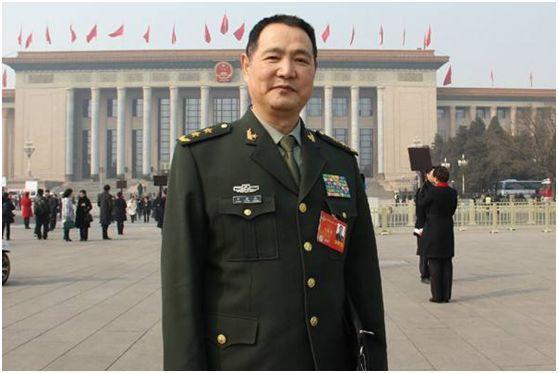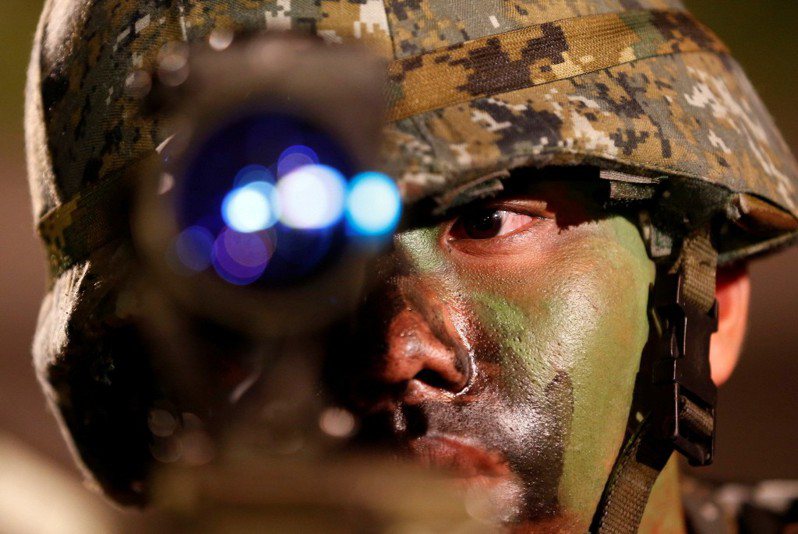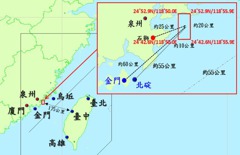———- Forwarded message ———-
From: E.Mike McCardel via ANS <ans@amsat.org>
Date: 2018-04-15 8:37 GMT+08:00
Subject: [ans] ANS-105 AMSAT News Service Weekly Bulletins
To: ans@amsat.org
AMSAT NEWS SERVICE
ANS-105
The AMSAT News Service bulletins are a free, weekly news and infor-
mation service of AMSAT North America, The Radio Amateur Satellite
Corporation. ANS publishes news related to Amateur Radio in Space
including reports on the activities of a worldwide group of Amateur
Radio operators who share an active interest in designing, building,
launching and communicating through analog and digital Amateur Radio
satellites.
The news feed on http://www.amsat.org publishes news of Amateur
Radio in Space as soon as our volunteers can post it.
Please send any amateur satellite news or reports to:
ans-editor at amsat.org.
In this edition:
* Martlesham Microwave Roundtable on BATC Video Stream (April 15)
* Satellite tracking software for Mac
* Delft University of Technology Delfi-PQ PocketQube Receives IARU
Coordination
* What is a Lilac Doing in Space?
* AMSAT-UK Colloquium 2018 Call for Speakers
* Intercosmos – 40th year of international human flights – SSTV Award
* AMSAT Plans Hamvention Rollout for 2018 “Getting Started”
Satellite Book
* AMSAT Rover Award Certificate
* MiniTiouner-Express Receiver Assembly for ISS HamTV 2.395 GHz
Downlink
* ARISS News
* Satellite Shorts From All Over
SB SAT @ AMSAT $ANS-105.01
ANS-105 AMSAT News Service Weekly Bulletins
AMSAT News Service Bulletin 105.01
From AMSAT HQ KENSINGTON, MD.
April 15, 2018
To All RADIO AMATEURS
BID: $ANS-105.01
Here is a news item which is more timely released sooner than
the weekend news cycle … some of their topics and techniques
seem applicable to future satellites … microwave construction,
SDR, GNUradio …
AMSAT-UK relayed that the UKGHZ Martlesham Microwave Roundtable
Sunday [April 15] talks will be streamed live on BATCOnline:
https://beta.batc.org.uk/live/mmrt
The Sunday programe will streamed live. The times are
apparently British Summer Time which I believe is UTC+1
this time of year.
Their programe includes:
09:00 Doors Open
09:50 Welcome and Opening
10:00 UK Microwave Group AGM, Trophy Presentations
10:45 Refreshments & Judging of the Construction Contest
11:00 An introduction to SDRs and GNU Radio – Heather Lomond M0HMO
11:45 Aircraft Scatter using Airscout – John Quarmby G3XDY
12:30 Lunch Break
13:30 ATV on 5.6, 10 and 24GHz – Dave Crump G8GKQ
14:15 The Wednesday Digifest – John Worsnop G4BAO
15:00 Refreshments
15:15 UKuG Contest Forum – John Quarmby G3XDY
16:00 Close
[ANS thanks AMSAT-UK for the above information]
———————————————————————
Satellite tracking software for Mac
Dog Park Software is pleased to announce that MacDoppler Version
2.28 has been released.
What’s New in this release ?
* TS-790A/E driver rewritten (TU IU1KBH).
* Added Country names to 2D map.
* Added Natural Earth III maps.
* Added 2D/3D map snap shots.
* VFO steppers improved. (manual page 11)
* Delete Mode or Satellite from Modes editor.
* 2D Track List check box persistence fixed.
* 2D Draw performance improved.
MacDoppler is used around the world by Amateur Radio operators,
satellite spotters, educators and commercial customers from CBS News
to the International Space Station Amateur Radio Hardware Management
program, Delta Telemetry Tracking and Control at Integrated Defence
Systems, Florida State University and the CalPoly CubeSat Project.
MacDoppler will provide any level of station automation you need
from assisted Doppler Tuning and Antenna Pointing right on up to
fully automated Satellite Gateway operation.
MacDoppler features:
* Full 2D and 3D OpenGL projection model of earth.
* Track List sorted in real-time order of next pass.
* Full predictive dead spot crossing so that a pass is never
interrupted by the beam heading passing a dead spot.
* Speech advisory of next satellite Rise and Maximum Elevation.
* Horizon Window shows elevation of upcoming passes on a time line.
* Tuning Dial Tracking allows you to tune the downlink from your
radio’s front panel while MacDoppler automatically adjusts the
uplink.
MacDoppler must be registered for some features to work and to work
beyond the 15 minute time limit.
This is a free upgrade for all MacDoppler Registered users and can
be downloaded from: http://dogparksoftware.com/MacDoppler.html
[ANS thanks Dog Park Software via Southgate ARN for the above
information]
———————————————————————
Delft University of Technology Delfi-PQ PocketQube Receives IARU
Coordination
Delfi-PQ is an educational PocketQube mission designed by the MSc
and BSc students at the Delft University of Technology in the
Netherlands. The design of this spacecraft has been carried out as
part of their curricula to acquire experience on the field. Students
are involved on all the mission phases and they will also participate
in operations.
The second goal of this mission is technology demonstration, being
this spacecraft one of the smallest ever launched belonging to the
PocketQube class with a size of 50x50x192 mm. It contains all the
required systems to operate in space.
It is one of the first PocketQubes to be launched and it is the
cornerstone for a series of PocketQubes from TU Delft with the aim
to iteratively advance the platform to enable ambitious scientific
objectives with networks of PocketQubes in the future.
Delfi-PQ mainly focusses to demonstrate a reliable core system
(comprising a power system, a communication system, an attitude
control system and an on-board computer). Furthermore, it will
host a few small-scale experiments which can be used for technology
research.
These experiments are related to future propulsion, more advanced
attitude control, navigation, thermal analysis and control. The
orbital life time of Delfi-PQ is currently foreseen to be very short
(only up to 150 days due to the low orbit of deployment). This will
ensure the spacecraft cannot contribute to the space debris problem
and also it will occupy its assigned frequency band for a very short
time, preventing spectrum pollution.
The demonstration of the core spacecraft and its experiments is
expected to take all the mission time, till deployment. The communi-
cation system, in particular, will be tested and the support of
amateurs will also be important.
AX.25 will be used worldwide to deliver telemetry. The protocol was
selected due to the widespread community around the world that make
already use of such a standard. A mode using advanced communication
protocol, using forward error correction, will be tested upon command
(and so receivable over Europe). This new protocol is decoded by the
provided decoding software. The decoding software will enable radio
amateurs to help estimating the performance of the receiver in
different conditions with statistics transmitted back to a central
server
In order to provide a return favor to the radio amateur community
for the use of the frequency bands, this mission will publish all the
instructions for satellite reception and telemetry decoding. A
decoding application will also be provided to radio-amateurs around
the world before launch to allow easy decoding with standard
hardware. This application will also be used to submit the received
frames to a central repository. The contribution from radio amateurs
in receiving the data will greatly enhance the mission.
To make it more exciting to participating radio amateurs, several
challenges will be organized. Examples of challenges are thereception
of the first and the last frame. In particular, the first received
frame will be important for the team to assess the status of health
of the spacecraft. The submitter will receive a prize for it.
Since the satellite will be deployed to only 350 km and the foreseen
operational lifetime is equal to the orbital life time, it will be
very interesting to monitor its deorbiting process. Next to this,
the number of received frames and the global distribution will also
lead to the definition of several challenges. All challenges will
have some small prize and achievement certificate associated with
it.
A UHF downlink on 436.650 MHz has been coordinated by the IARU. The
transmission protocol will be GMSK at up to 19k2 bps. Planned for a
launch on a Vector rocket from Kodiak Alaska in August 2018 with
other PocketQubes.
More information available on: http://delfispace.nl
The IARU coordination announcement can be accessed at:
http://www.amsatuk.me.uk/iaru/finished_detail.php?serialnum=605
[ANS thanks the IARU and AMSAT-UK for the above information]
———————————————————————
What is a Lilac Doing in Space?
Student Built LilacSat-1’s Success with an Amateur Radio
Mission LilacSat-1 accomplished, according to the reports from the
students at the Harbin Institute of Technology.
The student built LilacSat-1 carries an amateur radio 145/436 MHz FM
to Codec2-BPSK digital voice transponder, APRS Digipeater and camera.
The satellite was developed at the Harbin Institute of Technology
and is part of the QB50 mission which aims to study the lower
thermosphere. It was deployed from the International Space Station at
0835 GMT on Thursday, May 25, 2017.
Shortly after deployment LilacSat-1 took a picture of the solar
panels on the ISS. The image was downloaded by the students on
436.510 MHz +/- 10 kHz Doppler Shift using 9600 bps BPSK.
The FM to Codec2-BPSK transponder was activated late afternoon GMT
on Thursday, May 25:
FM Uplink 145.985 MHz with 67 Hz CTCSS (PL Tone)
Codec2 9600 bps BPSK Downlink 436.510 MHz
The first contact using the Codec2 transponder took place on May 31
between Mike Rupprecht DK3WN and John Grant GI7UGV
http://www.dk3wn.info/p/?p=79889
LilacSat-1 radio information is at
https://tinyurl.com/ANS105-LilacSatRadioInfo
Adam Whitney K0FFY has documented how to receive the LilacSat-1
Codec2 Digital Voice transponder using the FUNcube Dongle Pro+ SDR
http://adamwhitney.net/working-lilacsat-1/
M6SIG live CD for LilacSat 1 and 2
http://chertseyradioclThe main payload is an ion and neutral
particle mass spectrometer (INMS) developed by the University of
London (UCL) to measure the mass and distribution of charged and
neutral atoms.
LilacSat-1 signal received by JA0CAW
In preparation for the deployment HIT students installed new VHF and
UHF antennas for the ground station.
Harbin Institute of Technology Amateur Radio Club BY2HIT
http://www.by2hit.net/
http://weibo.com/by2hit/
http://www.qsl.net/by2hit/
https://www.qrz.com/db/BY2HIT
LilacSat-1 page (use Google translator)
http://lilacsat.hit.edu.cn/?page_id=143
QB50 LilacSat-1 information https://upload.qb50.eu/detail/CN02/
IARU information
http://www.amsatuk.me.uk/iaru/finished_detail.php?serialnum=343
Keplerian Two Line Elements (TLEs) ‘Keps’ for new satellites
launched in past 30 days
https://tinyurl.com/ANS105-LiliacSatTLE
Lilacsat 1 and 2 decoder now available on Experimental Raspberry Pi
(3) image with GNU radio / gr-lilacsat
https://tinyurl.com/ANS105-LiliacSatDecoder
LilacSat-1 Codec2 downlink by Daniel Estévez EA4GPZ / M0HXM
http://destevez.net/2016/10/lilacsat-1-codec-2-downlink/
Updated LilacSat-1 Live CD from M6SIG latest link at
https://tinyurl.com/ANS105-LilacSatLiveCD
[ANS thanks Jill Durfee and Satnews for the above information]
———————————————————————
AMSAT-UK Colloquium 2018 Call for Speakers
This is a call for speakers for the AMSAT-UK International Space
Colloquium 2018 which, will be held this year on 13-14 October, in
conjunction with the RSGB Convention at Kents Hill Park Conference
Centre, Milton Keynes, MK7 6BZ, United Kingdom .
AMSAT-UK invites speakers, to cover topics about Amateur satellites,
CubeSats, Nanosats, space and associated activities, for this event.
They are also invited to submit papers for subsequent publishing on
the AMSAT-UK web site or in Oscar News.
We appreciate that it is not always possible to give a firm
indication of attendance at this stage but expressions of interest
would be appreciated.
Submissions should be sent via e-mail to: dave@g4dpz.me.uk
AMSAT-UK also invite anyone with requests for Program Topics to
submit them as soon as possible to G4DPZ. Invitations for any papers
on specific subjects will be included in the future call. Likewise if
anyone knows of a good speaker, please send contact and other
information to G4DPZ.
[ANS thanks Dave, G4DPZ for the above information.]
———————————————————————
Intercosmos – 40th year of international human flights – SSTV Award
Please act now as the deadline is May 15th, 2018.
SSTV from the International Space Station was active April 11-14
worldwide as part of Cosmonautics Day, which takes place on April 12.
Images were related to the Interkosmos project
(https://en.wikipedia.org/wiki/Interkosmos).
This activity covered most of the world during the operational period.
The images were be transmitted on 145.800 MHz and the mode was PD120.
A special Award has been made available to those posting reception
reports.
To obtain the Award one should receive and decode at least one
picture during the activity period. The quality of the received image
does not have to be perfect, but good enough to identify the picture.
Partial images are acceptable.
The award is in electronic format (JPG). It will be sent by e-mail.
The criteria as follows must be met to obtain the Award:
Load your decoded images on the page:
www.spaceflightsoftware.com/ARISS_SSTV/index.php
Fill in the application form on https://ariss.pzk.org.pl/sstv/
Please act now as the deadline is May 15th, 2018.
Details and a list of ARISS SSTV Award winning stations are
available at: https://ariss.pzk.org.pl/sstv/
[ANS thanks Armand, SP3QFE, for the above information]
———————————————————————
AMSAT Plans Hamvention Rollout for 2018 “Getting Started” Satellite
Book
Gould Smith’s book, “Getting Started With Amateur Satellites”, is
being updated to tell you all about how you can get ready to operate
through the Fox-1 satellites launching later this year. Additional
chapters in the book tell you about tracking software, orbital
mechanics, antennas, radios, Doppler tuning, and operating
techniques. Chapters are also being added to tell you about the new
satellites (and there are many)soon becoming available for amateur
radio.
Going beyond brief descriptions in hamfest flyers, this book will
provide a complete reference for new satellite users to assemble a
basic station and to make your first satellite contacts. Also this
book you will teach you how to incrementally upgrade your initial FM
satellite station, time and budget permitting, to include automated
tracking as well as operating through the CW/SSB linear passband
satellites.
A companion Fox Operating Guide reference sheet is ready for release
at Hamvention 2018. This will be made available for the AMSAT
Ambassadors (formerly FieldOps) team for distribution at hamfests
and satellite operating demonstrations.
Watch for the 2018 “Getting Started With Amateur Satellites” book
and reference sheet at the AMSAT booth at the Hamvention. The book
will also be available in the AMSAT Store shortly after Hamvention:
https://www.amsat.org/shop/
[ANS thanks AMSAT’s 2018 Hamvention Team for the above information]
———————————————————————
AMSAT Rover Award Certificate
It has been awhile, the voting was in and the certificate has been
created. For those that have earned the award, the certificates will
be going out to the address in your AMSAT online store order soon.
If you would like to see what the certificate looks like, it is on
the AMSAT Rover Award web page.
https://www.amsat.org/amsat-rover
Thanks to everyone that submitted a picture to use on the award.
[ANS thanks Bruce KK5DO for the above information.]
———————————————————————
MiniTiouner-Express Receiver Assembly for ISS HamTV 2.395 GHz Downlink
A receiver suitable for the ARISS/HamTV 2.395 GHz DVB-S downlink
from the ISS is now available for purchase. The MiniTiouner-Express
receiver/tuner/analyzer assembly is a completely assembled and tested
unit contained in a small aluminum enclosure about the size of a 2
stack deck of cards.
The DATV-Express group created the design, construction and sale
of the Minitiouner-Express receiver. It is used with the free soft-
ware by Jean Pierre Courjaud F6DZP. The unit connects between an
antenna(s) and a PC computer USB2 or USB3 port using the Windows 7,
8 or 10 operating system. It receives DVB-S/S2 144MHz to 2420MHz
digital television signals for symbol rates between 100K and 10M
symbols/sec when used with the F6DZP MiniTioune software.
In operation, the computer monitor displays the received video and
graphic landing dot constellation to show the incoming signal level,
quality, FEC, MER and setup information.
The MiniTiouner-Express Receiver/Analyzer unit can be ordered from
the http://www.datv-express.com/ website. You need to first logon
to the website (or first register if you are a new user). Use the
PURCHASE A PRODUCT tab to order the product via PayPal.
The price for the MiniTiouner-Express unit is US$75 + shipping
Shipping for USA is US$7.00
Shipping to the European Union is US$24.00 including the VAT
Shipping anywhere international is US$35.00
Although initial stock has been depleted more units are on the way.
The MiniTiouner-Express User Guide (draft13) can be downloaded from
http://www.datv-express.com/CustomPage/Downloads
Information about the ARISS HamTV project can be found at:
http://www.ariss-eu.org/columbus/ham-video
The HamTV downlink from the ISS has recently only been active for
selected school contacts. HamTV often transmits a “blank signal”
useful for receiver and antenna testing when not in use for school
contacts.
[ANS thanks Daniel Cussen, EI9FHB via the HamTV@yahoogroups.ca list
for the above information]
———————————————————————
ARISS News
+ A Successful contact was made between Pinson Valley HS, Pinson,
AL, USA and Astronaut Ricky Arnold KE5DAU using Callsign NA1SS.
The contact began 2018-04-10 18:02 UTC and lasted about nine and a
half minutes. Contact was Direct via KN4BBD
ARISS Mentor was John K4SQC.
+ A Successful contact was made between About Gagarin from space
Session of radio amateur communication with Vologda branch of PJSC
“Rostelecom “, Vologda, Russia and Cosmoonaut Oleg Artemyev using
Callsign RS0ISS. The contact began 2018-04-10 13:37 UTC and lasted
about nine and a half minutes. Contact was Direct via RN1QC,
ARISS Mentor was Sergey RV3DR.
+ A Successful contact was made between Freeport Public Schools,
Freeport, NY, USA and Astronaut Scott Tingle KG5NZA using Callsign
OR4ISS. The contact began 2018-03-27 17:41 UTC and lasted about nine
and a half minutes. Contact was Telebridge via IK1SLD.
ARISS Mentor was Steve W2AKK.
Quick list of scheduled contacts and events:
Additional information can be found at http://ariss-sstv.blogspot.com/
Salado Intermediate School, Salado, TX, direct via K5LBJ
The ISS callsign is presently scheduled to be NA1SS
The scheduled astronaut is Scott Tingle KG5NZA
Contact is a go for: Tue 2018-04-17 16:44:23 UTC 24 deg
Central Islip Union Free School District, Central Islip, NY, direct
via KD2IFR
The ISS callsign is presently scheduled to be NA1SS
The scheduled astronaut is Ricky Arnold KE5DAU
Contact is a go for: Wed 2018-04-18 15:57:46 UTC 28 deg
The school will be hosting an ARISS contact on Wednesday April 18 at
15:57:46 UTC. The video stream of the contact will be available
online.
King’s High School, Warwick, UK, direct via GB4KHS
The ISS callsign is presently scheduled to be OR4ISS
The scheduled astronaut is Ricky Arnold KE5DAU
Contact is a go for: Thu 2018-04-19 12:05:19 UTC 72 deg
Russian school TBD
The ISS callsign is presently scheduled to be RSØISS
The scheduled astronaut is Alexander Skvortsov
Contact is a go for Tue 2018-04-24 11:05 UTC
The ISS callsign is presently scheduled to be RSØISS
The scheduled astronaut is Alexander Skvortsov
Contact is a go for 2018-04-25 08:35 UTC
[ANS thanks ARISS, Charlie AJ9N and David AA4KN for the above
information]
———————————————————————
Satellite Shorts From All Over
+ Video playlist for PocketQube 2018 Workshop at TU Delft
https://tinyurl.com/ANS105-PocketQube
[AMSAT-UK and AlbaOrbital via Twitter]
+ 7X3WPL Sahara DX Club
7X3WPL is now QRV permanently from Sahara DX Club in Laghouat. They
are using a Kenwood TS-2000, G5500 rotor and Wimo X-Quad for 2m and
70cm. (via Abdel M0NPT /7X2TT on amsat-bb)
[ANS thanks Sahara DX Club for above information]
+ The March/April 2018 edition of Apogee View, an update on AMSAT’s
activities from AMSAT President Joe Spier, K6WAO, has been posted to
the AMSAT website.
https://www.amsat.org/apogeeview/
[ANS thanks Paul N8HM for the above information.]
+ NASA e-Book Free Download
The flight directors in charge of the teams that oversee its
systems have written a 400-page book that offers an inside look at
the time and energy the flight control team at the Mission Control
Center at NASA’s Johnson Space Center in Houston devote to the
development, planning and integration of a mission.
“The International Space Station: Operating an Outpost in the
New Frontier”, is now available to download for free at
https://www.nasa.gov/connect/ebooks/index.html.
Additional details are available at:
https://preview.tinyurl.com/ANS105-BookDetails
———————————————————————
/EX
In addition to regular membership, AMSAT offers membership in the
President’s Club. Members of the President’s Club, as sustaining
donors to AMSAT Project Funds, will be eligible to receive addi-
tional benefits. Application forms are available from the AMSAT
Office.
Primary and secondary school students are eligible for membership
at one-half the standard yearly rate. Post-secondary school students
enrolled in at least half time status shall be eligible for the stu-
dent rate for a maximum of 6 post-secondary years in this status.
Contact Martha at the AMSAT Office for additional student membership
information.
73,
This week’s ANS Editor,
EMike McCardel, AA8EM
aa8em at amsat dot org
_______________________________________________
Via the ANS mailing list courtesy of AMSAT-NA
http://www.amsat.org/mailman/listinfo/ans









